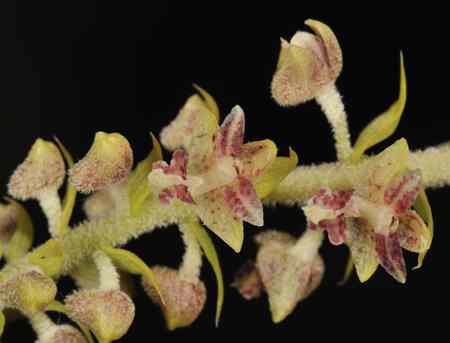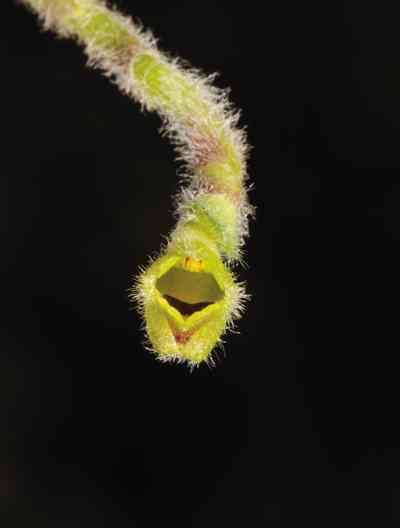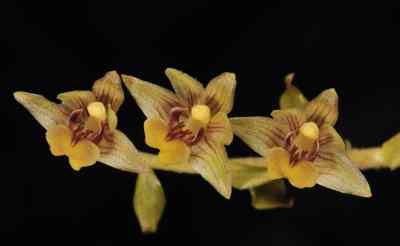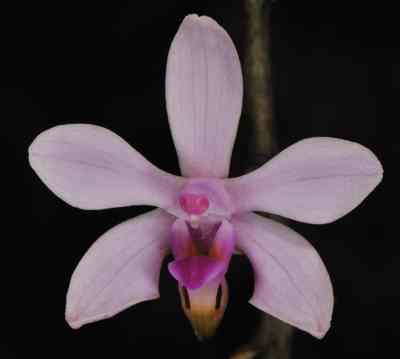Epiphyte. Rhizomes thick, stems very short, even unnoticeable. Leaves pendulous, fleshy, cylindrical, pointed at the apex, 5 to 8 cm long and less than .35 cm in diameter. Peduncle woolly, terminal with 1 to 3 flowers. Flowers about 1 to 1.5 cm across, sepals and petal bright yellow with green shade while opening and turns to orange shade in a day or two. Lip is with shades of dark brown with a bright yellow marking on its apex. Dorsal sepal broadly elliptic, lateral pair ovate to triangular, spreading. Petals smaller than the sepals, elliptic. Lip fleshy, oblong, concave, downy with oblong granular calli near the base and apex. Sepals and petals externally pubescent.

The Pursuit
A very interesting plant with pendulous narrow cylindrical fleshy leaves. The leaves are seen hanging down in long lines from the under side of tree branches. I had spotted this rarely only. The species is getting rarer and rarer, hence I put extra attention on the specimens I found and waited for them to be in flowers. The climb up the tree was very hard as the single trunk tree was a huge old one with no support to climb. The villagers of the area who are very familiar with climbing trees did a lot of hard work in helping me to climb up the tree along with my camera equipments up the tree. The first day of documentation was not satisfying as I was not able to bring out the hairy details of the flowers. My desire to back lit the flower with flashes at this great height made it a very difficult task. After several ideas and attempts I was able to fix the flashes on the appropriate position to bring out such a wonderful photograph of the species with amazing details.








